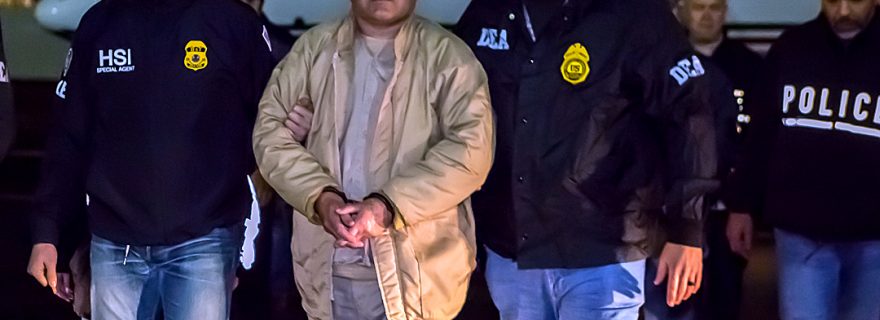‘The War on Drugs’: U.S.-Mexico Intelligence Cooperation
The USA and Mexico cooperate closely in the War on Drugs. Intelligence cooperation is a cornerstone of this alliance, yet the effectiveness of this partnership remains controversial.
The DEA’s and the Mexican government’s recent announcement of a new and improved strategy in the fight against Mexican cartels highlights the close cooperation between the United States and Mexico in the ‘War on Drugs’. In fact, the alliance between the two North American countries is perhaps the strongest in this domain. This blog post will shed some light on intelligence cooperation, a cornerstone of this alliance.
The most significant framework for U.S.-Mexico intelligence cooperation is the Mérida Initiative. This initiative aims to increase bilateral and regional cooperation in the fields of security and counter-narcotics, namely through intelligence sharing, training and technical assistance, as well as joint operational planning. The State Department and USAID fund the initiative, and other partners such as the Department of Defense, and the Department of Justice provide expertise and training to their Mexican counterparts. Since 2008, Mexico has received approximately $1.4 billion in assistance from the Mérida Initiative.
The U.S. actively participates in the collection and dissemination of intelligence in Mexico. Special units, known as Sensitive Investigative Units, bring Mexican and American officials together to share information, develop actionable intelligence, and plan and monitor operations. Two “fusion intelligence centres” also exist in Mexico – in Monterrey and in Mexico City – where critical, real-time intelligence is shared. The CIA and the DEA are heavily involved in these intelligence centres. Although the Mexican government does not allow American officials to take part in operations, they take part in the operational planning. The U.S. claims that at least 20 high-profile narcos have been captured and/or killed as a result of information supplied by them. Examples include the 2010 capture of Edgar Valdez Villareal, aka “The Barbie”, a key figure in the Beltrán Leyva Organisation, or the 2016 re-capture of famous drug lord Joaquín Guzmán, aka “El Chapo”, head of the Sinaloa Cartel.
Furthermore, the U.S. has trained Mexican officials on how to conduct HUMINT, counter-intelligence, wire-tapping, and interrogations. It has also provided a wide variety of security equipment and technology, such as SIGINT technology, sensors, cellphone-tracking gear, and so forth. What is perhaps most notable, is the request from the former Mexican President Calderón to have Intelligence, surveillance and reconnaissance drones launched from the U.S. fly into Mexican territory in order to track narcos and capture intelligence on their locations and networks.
The cooperation is extensive, and both countries are more closely intertwined than ever before in this War on Drugs. However, the question remains as to whether the cooperation is truly effective against cartels. In fact, 2018 is Mexico’s bloodiest year in its modern history; violence has reached record-breaking highs, and the cartels remain powerful and successful. Some argue that this is because the Mérida Initiative and cooperation efforts are focused on the ‘kingpin’ strategy, that is, focused on the capture or death of cartel leaders to disrupt the trafficking organisations. This approach has been accused of fragmenting the cartels, with smaller organisations dispersing throughout the country. This leads to increased rivalries and fights between cartels. However, as the DEA and Mexican government’s new strategy revealed, there are no plans to stop the targeting of cartel leaders. Critics also point to the over-militarised approach of this security cooperation. Greater intelligence capabilities have been translated into heavy military operations against the cartels, possibly opening the door to human rights abuses, and upsetting the balance between civilian and military force.
Furthermore, an investigation carried out by ProPublica and National Geographic revealed that a mass-attack against a small Mexican town in 2017 carried out by the Zetas Cartel was a consequence of leaked DEA intelligence. The DEA had shared intelligence with corrupt Mexican federal police officers, whom later shared with members of the Zetas. This points to a critical issue in intelligence cooperation. Despite efforts by the DEA to vet officers, corruption is a serious problem in Mexico, prompting questions about its reliability as a partner. Sensitive information may fall into the wrong hands, leading to more retaliatory attacks or failed operations.
Overall, the U.S. and Mexico have forged a deep, bilateral security alliance, with intelligence sharing as a centre-piece in the fight against narco-trafficking. It will, however, be interesting to see how this collaboration evolves. Mexico’s President-elect Andrés Manuel López Obrador will take office in December. He is known for his nationalistic rhetoric, and the collaboration on the War on Drugs has re-ignited long-standing Mexican political sensitivities about national sovereignty, and the expansive role the U.S. plays in their policies. After all, there is a Mexican saying that goes “Poor Mexico, so far from God, and so close to the United States.”


